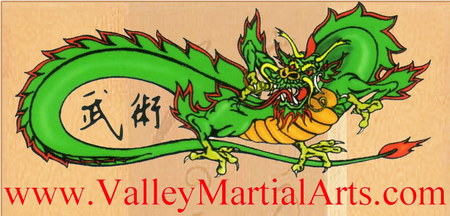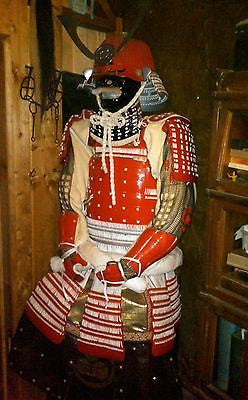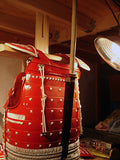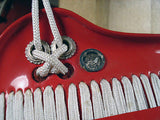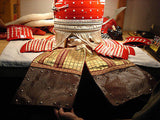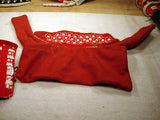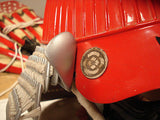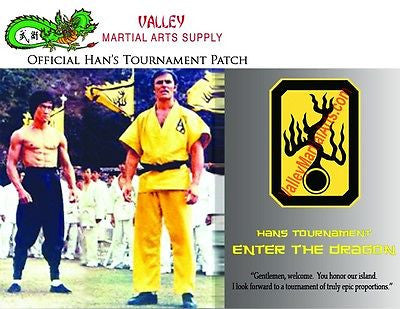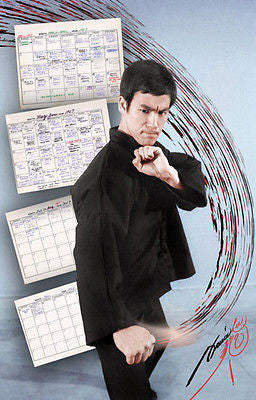This armor has been inspected and verified by members of the San Francisco Token Kai to be late Edo-period parade armor, probably ca. 1700's.
The helmet may be signed, but I do not want to remove the sewn-n helmet lining to do so. The armor had some restoration done by Don Angier while it was in the possession of the Hawley Library, but I do not know the extent of the restoration. However, I do know the original maedate (helmet round family crest piece) has been replaced with a replica.
The armor comes with a plain wooden black lacquered armor box that can also be used to "sit" the armor on for display. This armor also has a very unique feature in that it has the "standard" holder in the back of the armor. Usually these are missing or badly damaged. This one is original and intact, in perfect condition and included is the wood holder that fits inside the metal brackets.
Armor is usually categorized in one of three periods: Muromachi (1333-1573), Momoyama (1573-1603), or Edo (1603-1868). Later armor often had "recycled" pieces from earlier periods, meaning a helmet bowl from a couple of hundred years prior might be re-used in a set of armor if it was still in good shape. So the later period armor is sometimes hard to date based on some of the pieces being re-used by the armor makers. Earlier armor was generally heavier, and later armor was generally lighter due to improvements of design (allowing greater mobility). Warriors of lower ranked wore very minimal armor if any (generally just a chest protector and maybe helmet), while the generals wore very elaborate and detailed full armor, usually copying earlier the earlier designs to appear more "old school".
This armor appears to be of a type called "Tosei Gusoku". The helmet is of the "suji-bachi" type, meaning it has a few dozen vertical strips of iron ("ribs") that overlap and give support to the helmet bowl. The metal "horns" (wakidate) are a common type of stylized deer horns called "kuwagata". The red color of the armor was somewhat common, but was made famous for having been worn by the army of Takeda Shingen (that's not to say the armor is from his military, just that the particular color was made famous by him). White lacing was one of the popular colors used, but the color of lacing varied.
More pictures can be provided upon request.
